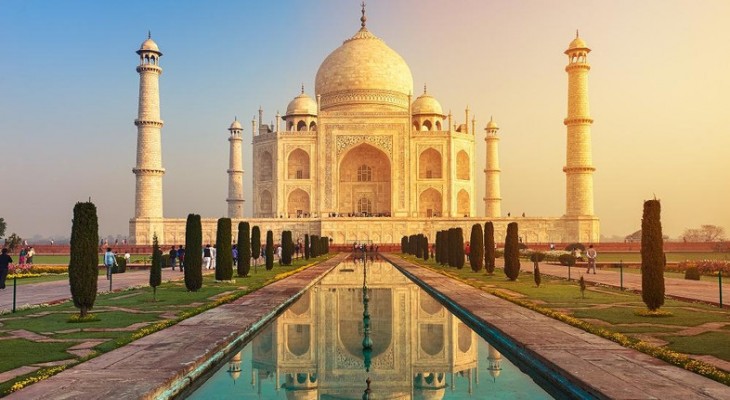India
culture
A Warli tribal painting by Jivya Soma Mashe from Thane, Maharashtra
Indian cultural history spans more than 4,500 years.[286] During the Vedic period (c. 1700 – 500 BCE), the foundations of Hindu philosophy, mythology, theology and literature were laid, and many beliefs and practices which still exist today, such as dhárma, kárma, yóga, and mokṣa, were established. India is notable for its religious diversity, with Hinduism, Buddhism, Sikhism, Islam, Christianity, and Jainism among the nation's major religions.The predominant religion, Hinduism, has been shaped by various historical schools of thought, including those of the Upanishads,[288] the Yoga Sutras, the Bhakti movement,and by Buddhist philosophy.
historians as the primary catalyst for Europe's Age of Discovery.
Society
A North Indian home-cooked tiffin lunch as delivered to an office by a dabbawala. Bottom: A South Indian thali-style dinner as served in a restaurant.
Traditional Indian society is sometimes defined by social hierarchy. The Indian caste system embodies much of the social stratification and many of the social restrictions found in the Indian subcontinent. Social classes are defined by thousands of endogamous hereditary groups, often termed as jātis, or "castes".India declared untouchability to be illega in 1947 and has since enacted other anti-discriminatory laws and social welfare initiatives. At the workplace in urban India and in international or leading Indian companies, the caste related identification has pretty much lost its importance.
Family values are important in the Indian tradition, and multi-generational patriarchal joint families have been the norm in India, though nuclear families are becoming common in urban areas. An overwhelming majority of Indians, with their consent, have their marriages arranged by their parents or other elders in the family.Marriage is thought to be for life, and the divorce rate is extremely low.As of 2001, just 1.6 percent of Indian women were divorced but this figure was rising due to their education and economic independence.Child marriages are common, especially in rural areas; many women wed before reaching 18, which is their legal marriageable age.Female infanticide and female foeticide in the country have caused a discrepancy in the sex ratio, as of 2005 it was estimated that there were 50 million more males than females in the nation However a report from 2011 has shown improvement in the gender ratio.The payment of dowry, although illegal, remains widespread across class lines.Deaths resulting from dowry, mostly from bride burning, are on the rise, despite stringent anti-dowry laws.
Many Indian festivals are religious in origin. The best known include Diwali, Ganesh Chaturthi, Thai Pongal, Holi, Durga Puja, Eid ul-Fitr, Bakr-Id, Christmas, and Vaisakhi.[335][336] India has three national holidays which are observed in all states and union territories – Republic Day, Independence Day and Gandhi Jayanti. Other sets of holidays, varying between nine and twelve, are officially observed in individual states.
Give us some Compliment!
WHY BOOK WITH US
- Variety of Holiday Packages
- More Repeated Customers
- Guaranteed Departures
- Team of Destination Experts
- Competitive Prices
- Best Customer Experience
- Available of Experienced Guide

